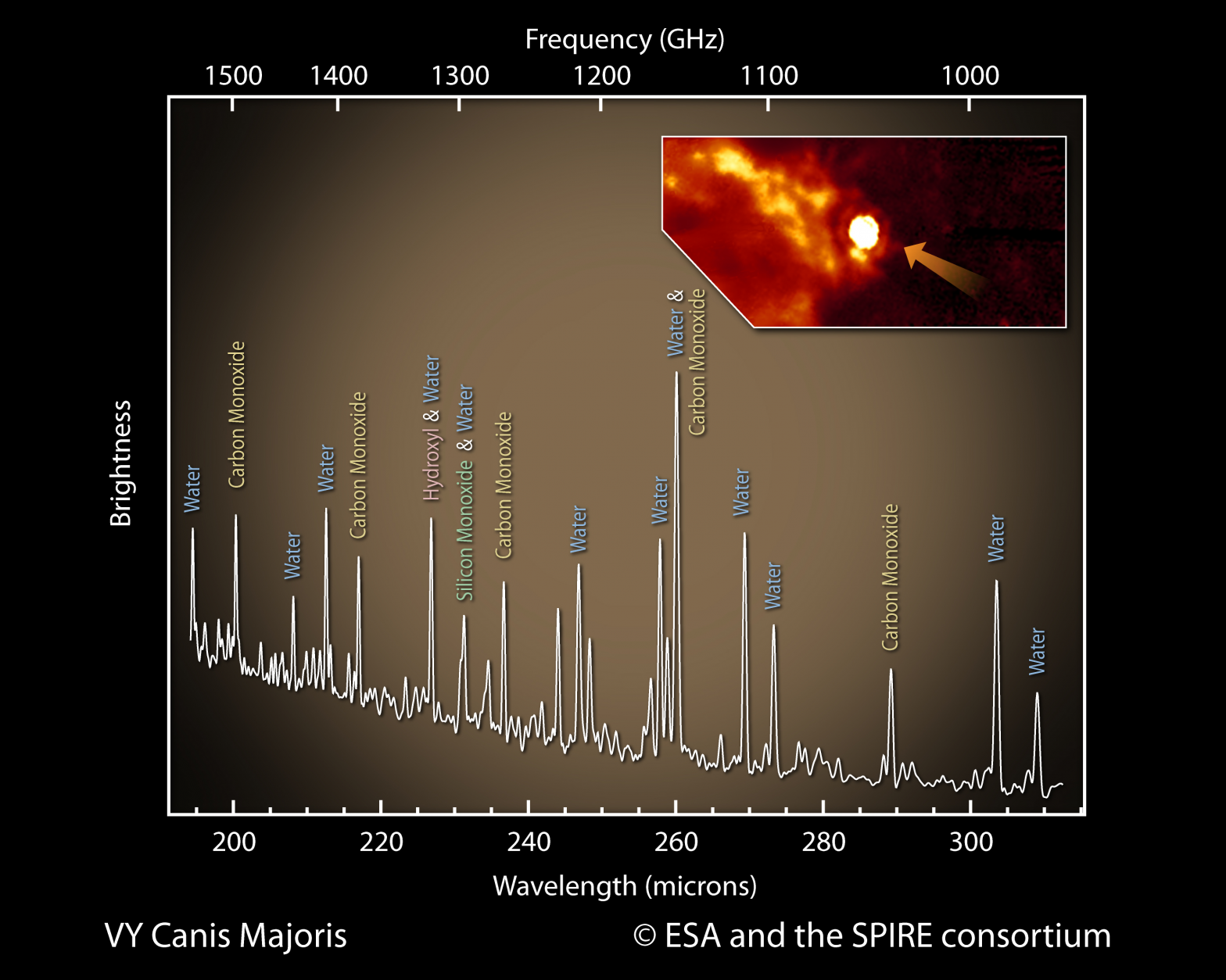| Basic Information | |
| What is this? | A red hypergiant star, nearing the end of its life |
| Where is it in the sky? | In the constellation of Canis Major |
| How big is it? | About 2000 times the diameter of our Sun, about 30 times the mass |
| How far away is it? | About 5000 light years |
| What do the colours represent? | The graph shows the “spectrum” – how bright it is at a range of wavelengths – and the labels show the emission from some of the identified molcules. The inset image shows the star as imaged by SPIRE. |
See this object in:
The star VY Canis Majoris is the largest star in our Galaxy with a known size. It is estimated to have 30-40 times the mass of our Sun, but a gigantic 2000 times the size – that means that if it were suddenly placed in our Solar System, it would extend out to the orbit of Saturn! It is also very bright – producing around 500,000 times as much light as our Sun – but is far enough away that it can’t be seen with the naked eye. Stars this massive are burning so brightly that they live for only a few tens of millions of years – not for ten billion of years like our Sun. The inset of the figure shows the star as seen by SPIRE – it is so bright that it saturates the colour scale of this image.
The star is a “red hypergiant” star, and is shedding its outer layers, producing a cloud of gas around it. By examining this cloud with its spectrometer, the SPIRE instrument on Herschel can identify many of the molecules present around the star. The spectrometer breaks the light down into hundreds of wavelength slices and measures the brightness in each slice – this “spectrum” is plotted on the graph above. Each molecule emits light preferentially at a series of particular wavelengths, called emission lines, which are seen as spikes in the spectrum. By comparing the observed emission lines with what has been measured in laboratories on Earth, astronomers can identify the molecules.
The labelled lines on the graph above show emission from Water (H2O), Hydroxyls (OH), Silicon Monoxide (SiO) and Carbon Monoxide (CO), but there are many more identified by their emission lines. In a few million years, when the star explodes in a supernova, these molecules will all be spread through the surrounding environment. When a new generation of stars forms they will contain these molecules, as will any planetary systems that eventually form around them. Stars like VY Canis Majoris are likely existed in our part of the galaxy before the Sun formed, and been the source of many of the complex molecules present in the early Solar System and, later, on the Earth.

